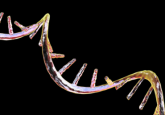Stripping off for safety: a novel ‘naked’ mRNA vaccine emerges

A new mRNA vaccine delivery method without the lipid nanoparticle coating could improve the safety profile of the COVID-19 vaccines and others like them.
A Japanese research collaboration spearheaded by the Uchida Laboratory at Tokyo Medical and Dental University (Japan) has developed a method that allows the administration of ‘naked’ mRNA vaccines without their usual lipid nanoparticle (LNP) casing. This method could lead to the development of a novel vaccine for SARS-CoV-2 with fewer adverse events and expands the horizons for other mRNA-based vaccines.
The mRNA vaccines developed to tackle COVID-19 delivered extraordinary results in a short space of time, enabling fast, effective and safe vaccination with only a few doses required. However, as the virus continued to mutate and new variants emerged, the need for more continual and updated vaccine doses, particularly for the most vulnerable, became clear.
This necessity has highlighted the importance of minimizing the incidence of adverse reactions to the vaccines. The current mRNA vaccines are enclosed in LNPs, which protect the delicate mRNA from degradation, increasing its effective delivery into cells, and aid migration to the lymph nodes to deliver mRNA to immune cells, while also helping to kickstart the immune response.
However, LNPs can escape the injection site and interact with other tissues where the same properties that allow LNPs to stimulate the immune system in a positive way, lead to unintended and occasionally systemic inflammatory responses. While the incidence of these adverse events is well within the range considered safe, they can occasionally lead to severe conditions.
Vaccine hesitancy: what were the real-term impacts in the UK?
The results are in for the impact of undervaccination on hospitalizations and deaths during the COVID-19 pandemic.
In order to minimize these events, the team set out to develop a delivery method that avoided the use of LNPs, instead delivering a ‘naked mRNA vaccine’. The first aspect they addressed was that the current site of administration, in muscle tissue, is relatively sparse in immune cells, leading the team to opt for the comparatively immune-cell-dense skin tissue for their new delivery site. To more effectively deliver mRNA into cells without the assistance of LNPs, the team used a ‘jet injector’ device, which uses a controlled gunpowder explosion to produce a high-velocity jet flow of mRNA solution, to provide enough physical stress to introduce the mRNA into cells.
The team used mRNAs that produce luminescent proteins so they could evaluate the delivery of the mRNA into cells of mice. This was followed by administration of the model antigen ovalbumin in mice and subsequently viral challenge trials, administering naked mRNA that coded the SARS-CoV-2 spike protein in mice.
These investigations revealed that the jet injector improved the delivery of mRNA 100-fold compared to typical syringe injection, while keeping mRNA predominantly at the injection site. Contrastingly, the mRNA-loaded LNP controls migrated to the liver and other organs, leading to inflammation. While the naked mRNA did not initially migrate to the lymph nodes, antigen-presenting cells that integrated it did, inducing the maturation of lymph nodes near the site and likely increasing vaccine efficacy.
What’s more, the jet injector method stimulated the production of antibodies at a comparable rate to mRNA-loaded LNPs and increased the number CD8- and CD4-positive T cells, cells that are capable of clearing infected cells instead of just the free, floating viruses dealt with by antibodies. The challenge trials demonstrated the vaccine to be effective, significantly reducing the levels of virus in the lungs of mice versus the unvaccinated control group. Further tests revealed signs of equivalent vaccine efficacy in non-human primates.
Commenting on the success of their approach, the study authors stated that “our approach offers a safe and effective option for mRNA vaccines targeting infectious diseases.” Next, the team is working to develop the vaccine for clinical trials, hoping that it will enable a safer mechanism with which to provide repeat doses for mRNA vaccines moving forward.






